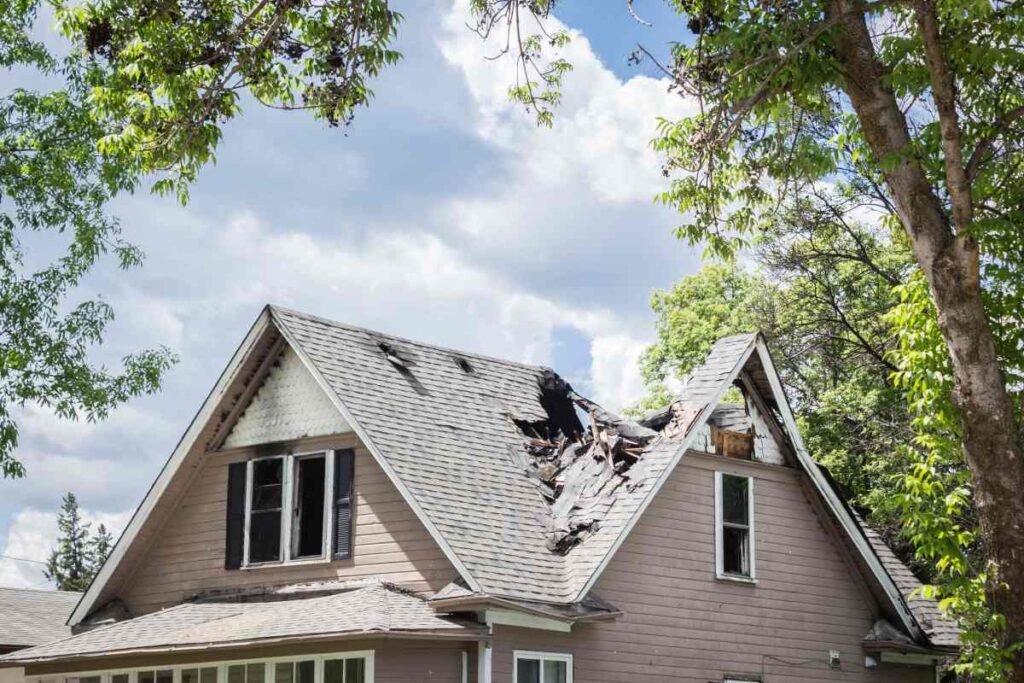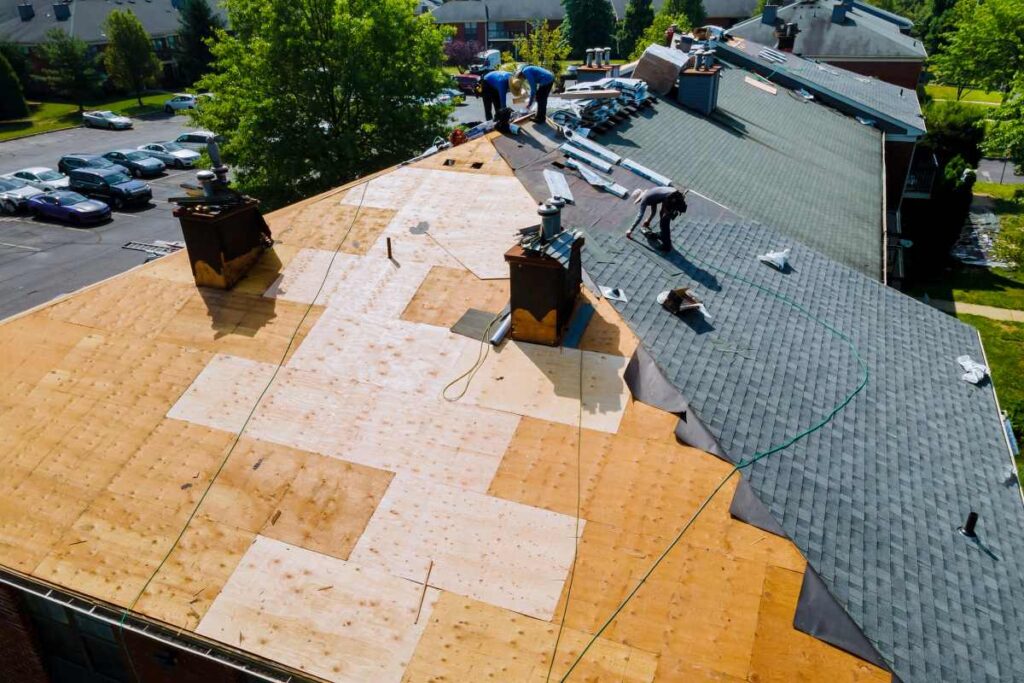According to the Insurance Institute for Business & Home Safety, roof-related damage accounts for as much as 90% of insured residential losses. When confronted with complex insurance contracts and claim negotiations with roof replacement insurance adjusters, many homeowners discover their lack of experience and knowledge of the claims process can cause their claims to be undervalued or even denied, resulting in unnecessary additional losses.
Unlike general contractors, typically specializing only in repairs, an experienced insurance restoration contractor can assist with roof replacement, gutter, and siding repairs as well as collaborate with adjusters and offer competitive quotes for any repairs the insurance company denies. Below, we cover the types of roof damage covered by insurance and terminology you can use to strengthen your case.
Understanding Homeowners Insurance Coverage For Roof Damage

Although the insurance company may suggest a preferred provider, homeowners can hire insurance restoration contractors to better understand their insurance coverage. Without their experience, many homeowners fail to account for key factors in their insurance negotiations, including:
Actual Cash Value vs. Replacement Cost Value
The actual cash value of the item is its current value, including depreciation. This means that the age and wear and tear on the roof will factor into the amount that the insurance company will pay to repair the damages. By contrast, the replacement cost value of the roof is how much it would cost to fully replace it with a similar roof.
Each may be advantageous in different situations. An insurance restoration contractor can help you decide between a cash value or replacement cost value calculation. One of the disadvantages of hiring general contractors directly through insurers is that they often use the calculation method less advantageous to the homeowner, either due to inexperience or the insurer’s influence.
Common Coverage Limitations
Home insurance policies commonly cover sudden accidental damage, such as storm damage, differently than gradual wear and tear. When combined, such as in the case of an old home damaged by hail, many homeowners struggle to accurately document the damage.
By misattributing wear and tear to recent weather damage, many homeowners have their claims unexpectedly denied. Insurance restoration contractors help homeowners understand common coverage limitations in their policies and file the most advantageous claim for their situation.
Typical Roof Damage Covered
Homeowners should understand the typical types of roof damage covered by insurance policies to file an accurate claim. Common types of damage include:
Storm Damage
Storm damage, including wind and hail, accounted for 40.7% of homeowners insurance losses in 2022. Hailstones can severely damage shingles and metal roofs, even when individual hailstones are not large. Storms can pull off or damage shingles and destroy other structural roofing materials, leading to subsequent damage.
Water Damage From Storms

Water damage from storms is not always covered as clearly as storm damage. While many policies cover sudden accidents, gradual water damage may be covered differently. It can lead to numerous types of long-term damage, including:
- Moisture retention
- Swollen or weakened materials
- Structural cracks
- Mold growth
- Granule loss
Isolating the source of water damage is key to filing a successful repair claim.
Fire Damage
Fire damage, typically caused by lightning strikes, wildfires, arson, or accidents can partially or fully damage the home and its contents. Regardless of the cause, most insurance policies provide fire coverage that includes the roof of the home and the residents’ belongings, as well as additional living expenses if the house is uninhabitable as a result of the damage.
Ice & Snow Damage
Ice and snow can weaken the roof over time, allowing moisture to build up and leak into the structure. Additionally, gutters can freeze and break, disrupting the roof drainage system and potentially resulting in additional water damage.
Falling Objects
Trees, branches, and other objects can fall and damage a roof, especially during a heavy storm. Many home insurance policies include coverage for falling objects, though the cause of the fall may determine how it is covered.
Other Covered Events
Homeowners insurance policies can also cover damage following some less common situations such as explosions, vandalism, civil riots, and more. Restoration contractors can review your policy and determine the amount of coverage you have for specific events.
How To Ensure You Get The Roof Replacement Your Home Needs

Regardless of the type of roof damage involved, the claims process involves more steps than many homeowners realize. Accurately understanding damage and repair calculations as well as the coverage limits on specific types of damage can help homeowners better with this process.
Homeowners should consider an insurance restoration contractor as the best source of help for their claim negotiation and repair process. At Expert Exteriors, our team has extensive experience accurately assessing roof damage to satisfy insurers while maximizing our clients’ claims.
Contact us today to learn more about the types of roof damage your insurance policy covers and let us guide you through the next steps toward getting the right compensation for your situation.
Schedule Estimate
"*" indicates required fields
